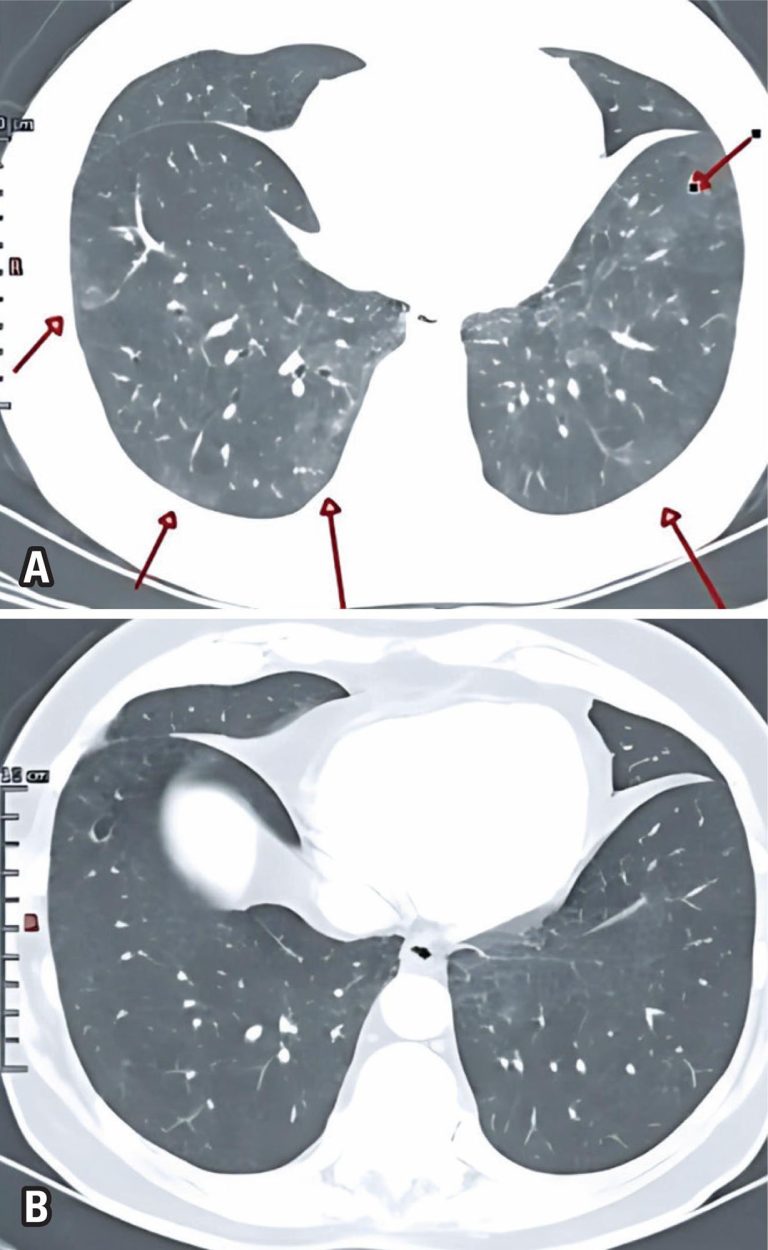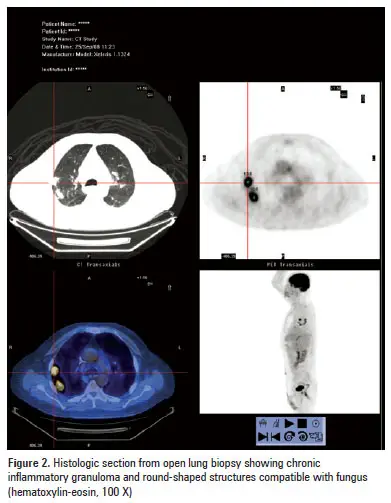31/Oct/2025
Concomitant diagnosis of hypersensitivity pneumonitis and localized epithelioid mesothelioma: a rare case report
einstein (São Paulo). 31/Oct/2025;23:eRC1296.
View Article31/Oct/2025
Concomitant diagnosis of hypersensitivity pneumonitis and localized epithelioid mesothelioma: a rare case report
DOI: 10.31744/einstein_journal/2025RC1296
ABSTRACT Hypersensitivity pneumonitis is an inflammatory lung disease caused by antigen inhalation after sensitization. Here, we report a rare case of the simultaneous diagnosis of hypersensitivity pneumonitis and epithelioid mesothelioma, a subtype of malignant mesothelioma. A 71-year-old man presented with an occasional dry cough and exertional dyspnea that had persisted for about 1 year. He reported walking daily in a park with a considerable number of birds during same period. Functional evaluation revealed a mild restrictive ventilatory disorder. High-resolution computed […]
Keywords: Alveolitis, extrinsic allergic; Lung diseases; Mesothelioma; Rare diseases
13/Oct/2021
Barriers to enrollment in pulmonary rehabilitation: medical knowledge analysis
DOI: 10.31744/einstein_journal/2021AO6115
ABSTRACT Objective To assess clinicians’ knowledge about pulmonary rehabilitation, and identify the barriers faced when referring patients with health insurance to pulmonary rehabilitation. Methods This was a survey-based cross-sectional study conducted in 2019, at a private reference hospital in São Paulo, Brazil. Eligible participants were physicians registered with the following specialties: internal medicine, geriatrics, cardiology, pulmonology or thoracic surgery. Results We collected 72 responses, and 99% of participants recognized chronic obstructive pulmonary disease as a potential indication for pulmonary rehabilitation; […]
Keywords: Delivery of health care; Health Knowledge, Attitudes, Practice; Lung diseases; Patient compliance; Referral and consultation; Rehabilitation
22/Jan/2013
Not all that shines is cancer: pulmonary cryptococcosis mimicking lymphoma in [(18)] F fluoro-2-deoxy-D-glucose positron emission tomography
einstein (São Paulo). 22/Jan/2013;10(4):502-4.
View Article22/Jan/2013
Not all that shines is cancer: pulmonary cryptococcosis mimicking lymphoma in [(18)] F fluoro-2-deoxy-D-glucose positron emission tomography
DOI: 10.1590/S1679-45082012000400018
We report of a case of pulmonary cryptococcosis mimicking lymphoma in a positron emission tomography (FDG-PET) scan. A 62-year old man with diffuse large B-cell lymphoma had complete resolution of abdominal and pulmonary lesions after three cycles of rituximab-based chemotherapy (R-CHOP). However, FDG-PET showed new pulmonary nodules, suggesting active lymphoma. Chronic inflammatory granuloma was seen in the histopathological exam, with round-shaped structures compatible with fungus, later identified as Cryptococcus neoformans on culture. The lesions disappeared after 6 weeks of fluconazole […]
Keywords: Case reports; Cryptococcosis; Cryptococcus neoformans; Lung diseases; Lymphoma, non-Hodgkin; Positron-emission tomography




